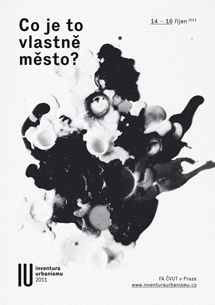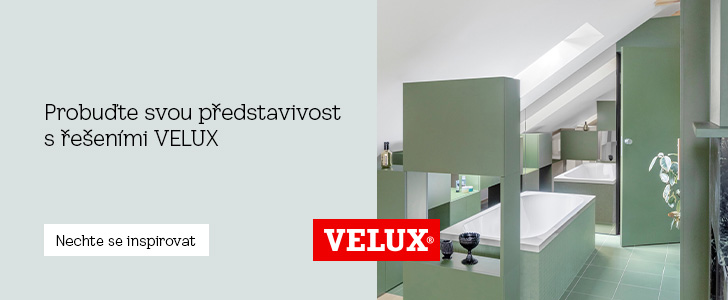
Jan Jehlík : HMOTA - SPACE - EVENTS
inventory of urbanism 2011
 |
(Carl Gustav Jung)
“Any architectural work that does not express calm clarity is erroneous.”
(Luis Barragán)
I am convinced of the need for a stable language and sense of being.
I am convinced that it is necessary to maintain order in buildings and processes.
I am convinced that all physical environments are architecture.
I am convinced that the city is built like houses, only its temporal scale corresponds to the spatial scale.
(JJ)
Our municipalities are facing a second wave of “mandatory” land use plans; in many places they are still in the stage of intention or selection of the developer. This is an exceptionally serious moment, a moment of questioning the quality, not of merely fulfilling a task set by authority. Better no plan than a bad one. Do we even ask how it is possible that there are so many changes to plans?, how is it possible that the changes are mostly processed by the original developers who bear the blame for many of the changes? An illustration of the incapacity of developers is often the argument of “stupid self-government” or “aggressive developer.” Let us finally admit that self-governance is inherently uninformed (i.e., “stupid”) and developers are inherently aggressive. We ask ourselves whether we have the ability to understand, read, and translate these natures of human community into plans? Yet within a quality interpretation that persists even when meeting the demands of ordinary people, managers, and investors. Perhaps we just do not know how to find and offer a strong and understandable idea that can withstand a certain degree of deformation. Only then is the city alive, and the plan life-giving when they have "a strong backbone, stable organs, and living tissue."
Architecture is proximity, process, quality in time and space, it is closer to quantum physics than sociology or construction. From the perspective of generalizing norms, it is unstable because the environment itself is unstable. The land use plan is static information, and in this role it must be grasped.
Architecture is a process working with time and space, with uniqueness, with events. In opposition to this approach, existing Czech land use planning works under the belief in measurable static standards. The demand for environmental quality has been replaced by the demand for system functionality. Czech municipalities now face a serious question: is such a land use plan really the right tool for valuable development? As managers of the territory, as experts, and as citizens, we must continually ask ourselves this question and seek a suitable path and appropriate tool, otherwise we will blindly return to servitude. How to protect the valuable? How to regulate the common? How to encourage the individual? What form to choose? How to find a suitable developer? The settlement is a house, and a good house is architecture. A bad house is a failure…
Architecture is not a remnant from the table of the builder (construction), geographer (plan), and historian (theory), although it often seems so. The one who designs the physical environment from all three perspectives is the architect. The physical environment is a continuum. It is designed at the scale of a house (the stone is a brick), a set (the stone is a house), a settlement (the stone is a block). The form is binding, not the “brick” or process or function. The natural internal state of the form is transformation. The form is given by structure. The image of the meta-structure is a diagram, the image of the physical structure is a formula, and the image of the infrastructure is a network. All three are essentially independent statements about the overall image of the settlement, all must testify to quality, and none may be missing.
Land use plan, regulatory plan, and building plan are mutually irreplaceable. The illusion that all tools for shaping the environment can be replaced by the land use plan is fatal for cities. Each scale has its domain and its limits. The land use plan is a plan for the whole, it organizes parts, the regulatory plan is a plan for parts, it organizes blocks, and the building plan is a plan for investment and organizes houses. None of them regulates what is not essential for the corresponding scale and can be regulated by a lower scale. The essential informational layers of each of these plans are strategy, tactics, and operations. To understand and communicate this information, the intention is much more important than functional classification. The intentions of municipalities are inherently distinct, places, and people. The argument of comprehensibility in creating common formal norms for land use planning (OTP, legends, methodological guidelines, etc.) is a false argument because every truly good plan (in content and form), however structurally different from others, is understandable (especially for the citizen). It is necessary under all circumstances to examine the relationship between the plan and the real development of municipalities. Between intention and tool. This relationship is much more than an institutionalized schedule. In the formal sense, it is a language for understanding, in the content sense it is a consensus. It is about efficiency in the broadest sense of the word, about the will to communicate.
It should generally hold that the less I can estimate the future “shape,” the less I set its limits. Conversely, the more I refine the tools and processes. Today's land use plans are unequivocally unsuitable tools – the functional stratification of the territory is a formal game, in its illusory objectivity it facilitates the “mass of system engineering” (GIS, etc.) and “projecting the future” using non-architectural, hence engineering tools. While these are necessary, they are merely service tools. The organization of systems is only a condition, not a quality attribute. A typical example of the vulgarization of creating environments are the mandatory dimensions and distances of public spaces enforced by regulations. Meanwhile, a large number of life-giving structures are contrary to current legal norms (the quantity of valuable environments in historical villages, towns, and places does not comply with these norms). The order of importance for creating quality is: 1. intention (idea) as direction and purpose (quality self-governance) 2. project and realization as the materialization of shapes and events (quality processing) 3. land decision-making as coordination of interests (quality office), 4. planning documentation as a basis (!) for decision-making about private and public investments (form must adapt to purpose, place, and time), 5. laws, decrees, and general regulations as a framework reflecting only what is truly general.
Quality is in what is and what lasts. A stable (however dynamic) environment, in both a physical and psychological sense. Its emergence is preceded by the process of realization, that is, shaping and financing. This is preceded by the process of designing, which is the determination of the procedure of work. And this is preceded by the process of planning, which is the delineation of goals and priorities. These are mandatory phases of “construction,” none can be omitted without the risk of destruction or deforming of that construction. Every plan (like every investment) gains meaning only and exclusively when it contains a quality “construction” of that territory or place, consciously revealed habitable quality, an authentic image. And this must be clearly revealed at every scale and in every layer of intention, plan, or project. And this can only be effectively done using the image of the strategic, spatial, and organizational structure of the area. All other representations and descriptions are merely supportive partial layers. Space and image as construction/composition with a clear hierarchy, clear environmental scale, and clear proportions of parts to the whole, organization of the process with a clear ladder of priorities (neither transport nor greenery are at the top places!), procedures and steps.
And what is architecture? In a strong and clear personal opinion. Not in multi-criteria analysis or merely servile aggregation of participant wishes or the projection of “objective” rules of specialists and concerned authorities. For good future development of a municipality, it is necessary to seek good terms and good processing, i.e., a good client and a good processor. Whoever can put together a larger construction investment can put together a settlement. The opposite mostly does not hold true because the experience and knowledge of the organization of physical space at the user scale and the process of the real emergence of investments – the realization of the environment – is not present here. A good architect is and must be capable of working at all scales. Knowledge of artificially complicated administrative procedures is not a defining characteristic of an architect; therefore, it must not be the main criterion for selecting a processor of urban planning documentation (although it is necessary to control all processes, just as, for example, structural principles of building a house). How is it with finding authors, i.e., responsible persons? Helplessness and powerlessness in this “correct but not concrete” world in naming quality and authority complicates this search. The search for the objective is a path to unquality. Quality cannot be determined by multi-criteria analysis, but by personal guarantee of authority. Where are the basic human qualities that allowed the emergence of conscious civilization, valuable birth, and true progress? Openness, courage, and responsibility. We have too easily accepted the yoke of gray servants and the rule of the less capable.
Doc. Ing. arch. Jan Jehlík
The English translation is powered by AI tool. Switch to Czech to view the original text source.











